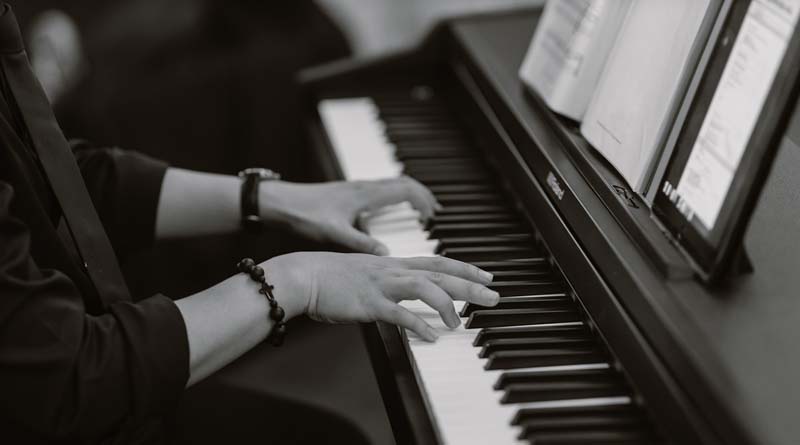
Beethoven’s Moonlight Sonata: Unveiling the Allure for Pianists Worldwide
July 10, 2023Ludwig van Beethoven, one of the most celebrated composers in the history of classical music, left an indelible mark on the world with his remarkable compositions. Among his vast repertoire, one piece stands out as a perennial favorite among pianists and music enthusiasts: the Moonlight Sonata. This iconic composition, officially known as Piano Sonata No. 14 in C-sharp minor, Op. 27, No. 2, has captivated audiences for centuries. In this blog post, we will explore the background of the piece and delve into the techniques that make it so revered by pianists around the globe.
Background of the Moonlight Sonata
Composed in 1801, the Moonlight Sonata is a product of Beethoven’s middle period, a phase characterized by his exploration of new musical ideas and his own emotional turmoil. The sonata comprises three movements: Adagio sostenuto, Allegretto, and Presto agitato. It is the first movement, with its hauntingly beautiful melody, that has garnered the most attention and admiration over the years.
The nickname “Moonlight Sonata” was given to the piece posthumously by the German music critic and poet, Ludwig Rellstab. The sonata’s serene and melancholic character, reminiscent of moonlight reflecting on water, inspired Rellstab’s imagination. However, it is important to note that Beethoven did not intend for the sonata to be associated with the moon or any nocturnal themes.
Techniques in the Moonlight Sonata
- Adagio Sostenuto: The first movement of the Moonlight Sonata is marked “Adagio sostenuto,” which translates to slow and sustained. This tempo choice sets the contemplative and introspective mood of the piece. The pianist is required to demonstrate control and sensitivity in playing the long, flowing phrases with a delicate touch, allowing each note to resonate and blend harmoniously.
- Expressive Harmonies: One of the defining features of the Moonlight Sonata is the unique harmonic language employed by Beethoven. The piece is characterized by rich chromaticism, unexpected modulations, and expressive dissonances, all of which contribute to its emotional depth. Pianists are tasked with bringing out these harmonic nuances, carefully balancing the dissonant tones and resolving them gracefully.
- Pedaling Technique: The strategic use of the sustain pedal is crucial in capturing the ethereal quality of the Moonlight Sonata. Pianists employ a “half-pedal” technique, allowing selected harmonies to sustain while keeping the texture transparent and avoiding excessive blurring. This delicate balance ensures the piece retains its clarity while creating a sense of resonance and depth.
- Dynamic Range: Beethoven’s dynamic markings in the Moonlight Sonata range from pianissimo (very soft) to fortissimo (very loud), demanding a wide dynamic range from the performer. Pianists must navigate the contrast between the soft, intimate sections and the powerful, passionate climaxes effectively. This interplay of dynamics further enhances the emotional journey of the composition.
- Artistic Interpretation: The Moonlight Sonata invites pianists to bring their own artistic interpretation to the piece. While Beethoven provided detailed markings, such as phrasing and dynamics, there is room for individual expression within these guidelines. This freedom allows pianists to convey their personal understanding of the music, fostering a deep connection between the performer and the audience.
Why Pianists Are Crazy about the Moonlight Sonata
- Emotional Resonance: The Moonlight Sonata resonates with pianists and listeners alike due to its profound emotional impact. Its introspective and melancholic character speaks directly to the depths of human emotion, evoking a range of feelings from tranquility to intense passion. Pianists find solace and a sense of personal connection through expressing and channeling their emotions while playing this timeless masterpiece.
- Technical Mastery: The Moonlight Sonata presents technical challenges that entice pianists seeking to refine their skills. The delicate touch required to navigate the flowing arpeggios, the control necessary for executing the rapid passages in the Presto agitato, and the coordination demanded in playing the intricate polyphonic textures all contribute to the allure of the piece. Conquering these technical feats provides a sense of accomplishment and growth for pianists.
- Enduring Popularity: The Moonlight Sonata’s enduring popularity is another factor that attracts pianists worldwide. Its widespread recognition makes it a staple of concert repertoire and a piece often requested by audiences. Pianists are drawn to the opportunity of presenting their interpretation of this beloved composition, sharing its beauty and emotional impact with listeners around the world.
Conclusion
Beethoven’s Moonlight Sonata continues to captivate pianists worldwide with its timeless allure. The combination of its haunting melodies, expressive harmonies, and technical demands makes it a masterpiece that stands the test of time. Pianists find solace, inspiration, and a means of personal expression in this sonata, further cementing its place in the hearts of both performers and listeners. As we continue to explore the vast realm of classical music, the Moonlight Sonata will undoubtedly remain a beacon of artistic brilliance, forever cherished by generations to come.
[110 total views]

